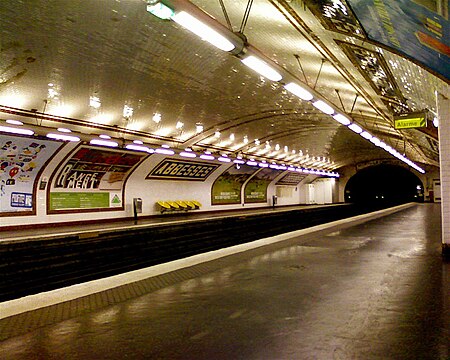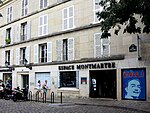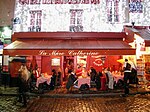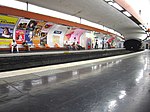Abbesses (Paris Métro)
Art Nouveau architecture in ParisArt Nouveau railway stationsParis Métro line 12Paris Métro stations in the 18th arrondissement of ParisRailway stations in France opened in 1912

Abbesses (French pronunciation: [abɛs], literally Abbesses) is a station on Paris Métro Line 12, in the Montmartre district and the 18th arrondissement. Abbesses is the deepest station in the Paris Métro, at 36 metres (118 feet) below ground, and is located on the western side of the butte (hill) of Montmartre. Access to the platforms is occasionally by elevators, but they are typically accessed by decorated stairs.
Excerpt from the Wikipedia article Abbesses (Paris Métro) (License: CC BY-SA 3.0, Authors, Images).Abbesses (Paris Métro)
Place des Abbesses, Paris Quartier de Clignancourt (Paris)
Geographical coordinates (GPS) Address Website Nearby Places Show on map
Geographical coordinates (GPS)
| Latitude | Longitude |
|---|---|
| N 48.884849 ° | E 2.338688 ° |
Address
Le mur des je t'aime
Place des Abbesses
75018 Paris, Quartier de Clignancourt (Paris)
Ile-de-France, France
Open on Google Maps










